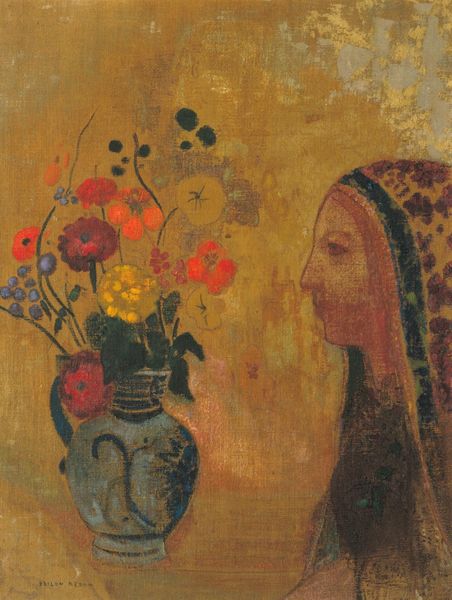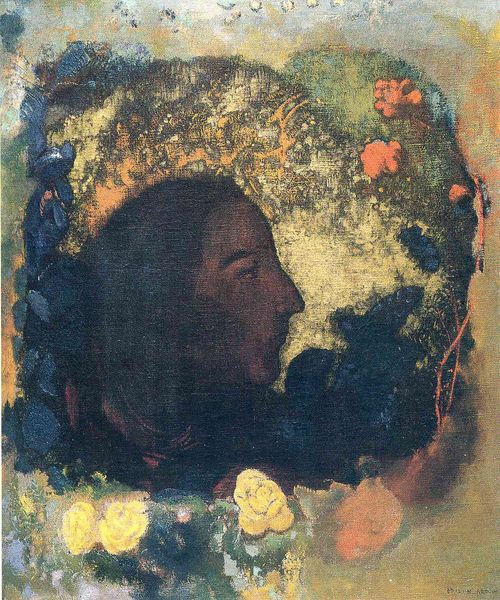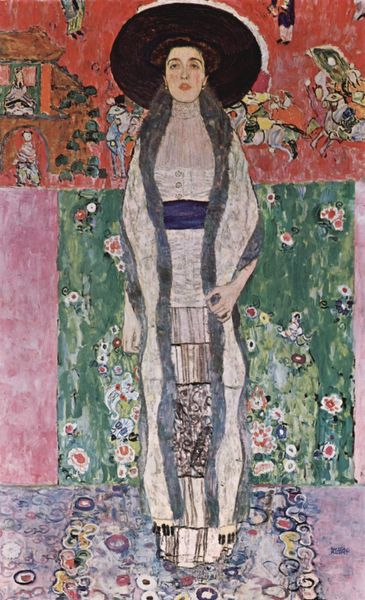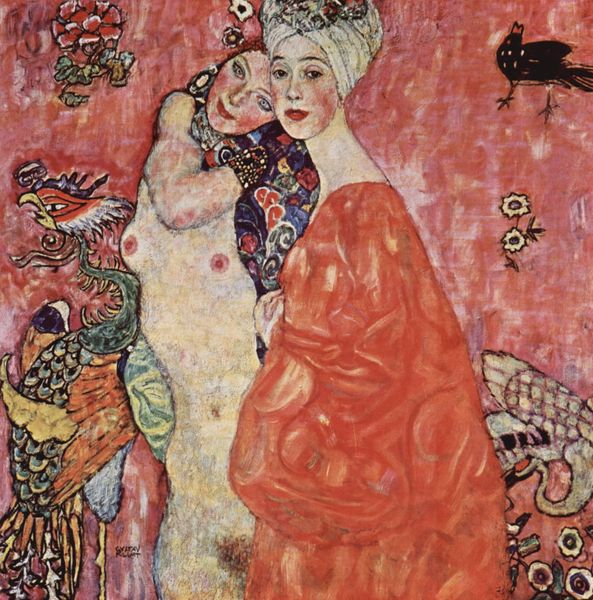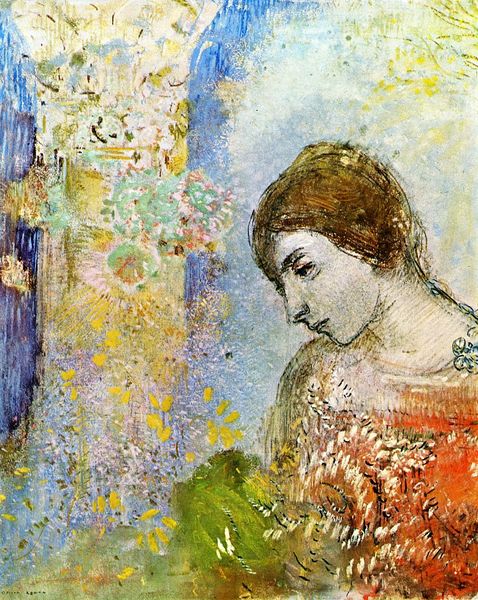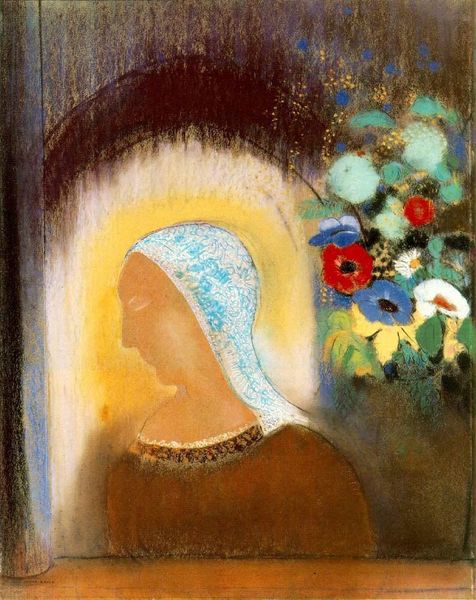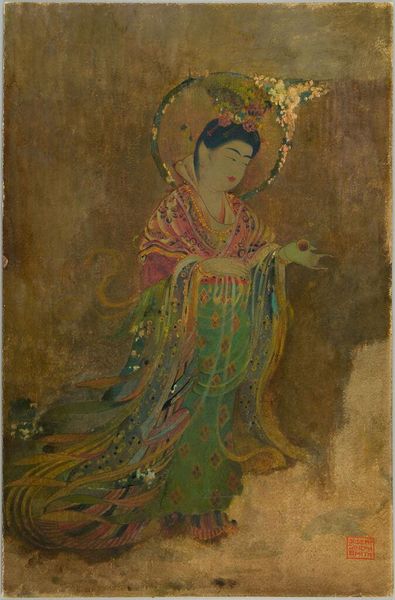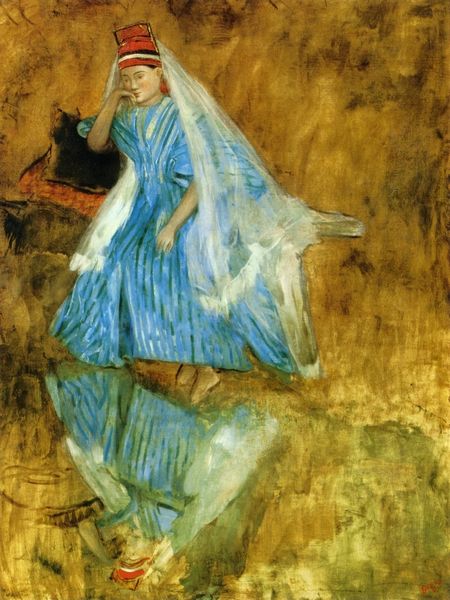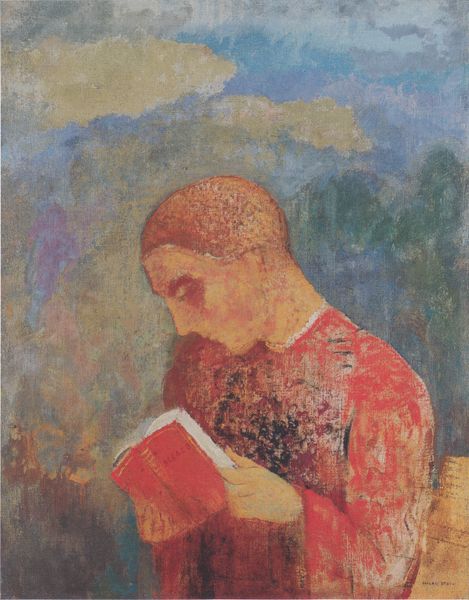
painting, oil-paint, impasto
#
portrait
#
painting
#
oil-paint
#
oil painting
#
impasto
#
symbolism
#
post-impressionism
Copyright: Public domain
Curator: It's somber, almost haunting in its muted palette. Is this typical of Redon? Editor: We are looking at Odilon Redon's "Lady of the Flowers", completed in 1895. Redon was a Post-Impressionist and Symbolist painter, so while the oil paint and impasto are characteristic of Impressionism, the subject matter veers into more psychological and imaginative spaces, often laced with a certain melancholy, as you noted. Curator: It's the weight of the flowers, perhaps? The title suggests adornment, but they seem to oppress her. Is there a socio-economic context to the representation of flowers here? Are they commodities, objects of status, symbols of ephemeral beauty and then decay? Editor: Interesting questions. The flowers certainly dominate the space around her, and it does appear as though the materiality of the flowers– the production, commerce, the very fleeting beauty inherent within– inform how the female figure is rendered. The woman appears framed by an elaborate, almost artificial floral arch, juxtaposed with her own slightly wilted bouquet. One could suggest she’s trapped in the cycles of their life and death, symbolic of the societal constraints placed on women. Curator: Constraints she may not have actively chosen. Her gaze is averted, internal, almost resigned. What were the critical reactions at the time? Did it resonate with a feminist critique, for instance? Editor: While "Lady of the Flowers" predates what we might call a full-fledged feminist art movement, the artwork taps into burgeoning conversations around the restricted roles of women in fin-de-siècle society. The painting becomes a site for meditating on the relationship between women and nature, between interiority and external presentation. Its impact lies, in part, with how Redon explores the material limits placed upon the female experience of beauty and value. Curator: That makes it such a pertinent conversation starter even now, as we grapple with shifting views of labor, identity, and environmental consciousness in our understanding of art. Editor: Absolutely. It showcases how a deep material analysis can shed light on issues still prevalent in contemporary discussions on gender, race and representation within cultural production. A piece of lasting resonance, in every sense of the word.
Comments
No comments
Be the first to comment and join the conversation on the ultimate creative platform.

